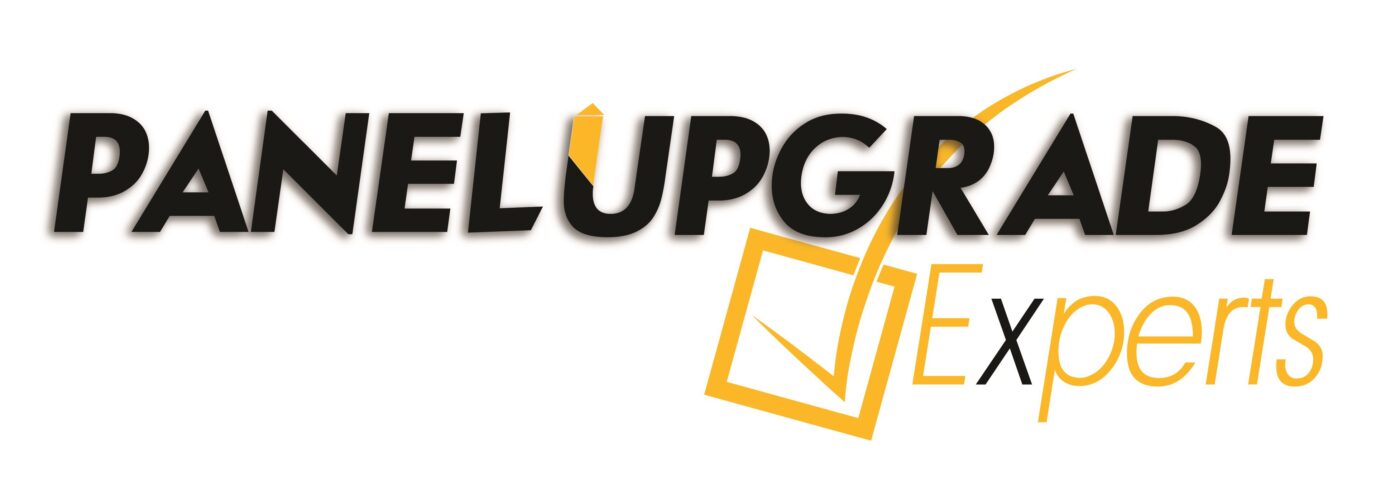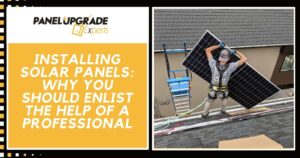As green technology advances, power systems solar are becoming a staple in energy generation, harnessing the sun’s power to create electricity.
This blog will explore the key components of a complete solar system and how they interact.
PV systems are primarily built from semiconductors that convert sunlight into electrical energy, a process that has revolutionized the use of solar power.
The configuration of these systems can vary widely, tailored to meet different operational standards and integration requirements with other power sources.
Solar power systems are generally categorized into On-grid, Off-grid, and Hybrid.
On-grid systems, also known as grid-tied systems, are connected to the public electricity grid and utilize a two-way meter to balance power usage and supply.
Off-grid systems operate independently from the utility grid, relying entirely on solar panels and batteries for power storage and supply.
Hybrid or backup power systems, on the other hand, combine features of both on-grid and off-grid making them reliable in power outages.
Now that we’ve covered the types of solar power systems, let’s delve into the essential components that make up these systems.
Main Components of Power Systems Solar
1. Solar Panels

Solar panels, the primary components of solar power systems, are essential for converting sunlight into electricity.
These panels have multiple photovoltaic (PV) cells—typically silicon wafers—arranged in a grid. Each cell captures sunlight and converts it into direct current (DC) electricity through the photovoltaic effect.
Individual panels can be linked in strings to form a larger solar array for effective energy production.
These strings connect to a string inverter, which converts the DC electricity into alternating current (AC), usable by household appliances and for grid distribution.
Panels can be installed in various configurations, including on rooftops, vehicles for off-grid setups, or mounted on the ground to maximize sun exposure.
Solar panels are designed to be durable, often lasting 25 years or more, making them a long-term investment for generating sustainable energy.
They are available in several types, including monocrystalline, polycrystalline, and thin-film for different efficiencies, cost considerations, and installation needs.
2. Racking and Mounting System

Solar panels, while pivotal for capturing sunlight, rely on robust racks and mounts essential for securing solar panels to various surfaces like rooftops, the ground, or poles.
These supports are crucial, not just as a foundation but also in ensuring that panels endure environmental stresses like high winds, which can reach up to 150 km/h.
Proper installation is critical to maintain the system’s efficiency; even a slight misalignment can significantly affect performance.
Mounts come in various forms, suitable for different settings. Roof mounts are most common, ideal for residential and commercial buildings, and even mobile applications on boats and RVs.
Ground mounts, which involve anchoring solar arrays on concrete piers, are another option, particularly useful when roof space is inadequate. They require more land but offer stability and the flexibility to adjust angles with the changing seasons.
For higher elevation and optimal sun exposure, pole mounts are employed, some equipped with tracking systems that automatically adjust the panel angles throughout the day for maximum sunlight capture.
Each mounting structure, made from durable materials like galvanized iron and stainless steel, is designed to offer a secure fit while minimizing space and facilitating easy maintenance or replacement of solar modules.
3. Inverter

An inverter is a crucial component of any solar power system, responsible for converting the direct current (DC) generated by solar panels into the alternating current (AC) used in most household appliances and the electrical grid.
This conversion is essential as it allows solar-generated electricity to be compatible with everyday energy needs and grid requirements.
Inverters are not only pivotal for system functionality but are also among the more significant investments in solar setups, following solar panels.
They are highly efficient, typically achieving conversion rates of over 90%. Another important factor is safety.
Most inverters have safety features like ground fault circuit interruption and anti-islanding that shut down the system automatically when the power goes out. This keeps everyone safe and in line with government rules.
There are two primary types of inverters used in residential solar installations: string inverters and microinverters.
String inverters manage the conversion for the entire solar array and are generally installed alongside the system.
In contrast, microinverters are attached directly to each solar panel, allowing for individual DC to AC conversion, enhancing efficiency, and providing performance monitoring for each panel.
4. System Disconnects

Solar power system disconnects are essential safety components in any solar installation, functioning primarily as robust electrical switches.
These disconnects allow for the immediate cessation of DC power output from the solar panels and array, which is crucial during repairs, maintenance, or in the event of system issues or damage.
For DC, appropriately rated MCBs are used for connecting and disconnecting the array and PCU for maintenance, with switches and circuit breakers specifically rated for DC.
On the AC side, suitable MCBs facilitate the connection and disconnection of the PCU and load.
Their capability to handle the full power output on sunny days makes them critical for ensuring safety.
Known as double safety disconnects, they provide a vital function yet often remain unnoticed by many homeowners until deep into the solar installation process.
Additionally, these switches are crucial not only in emergencies but also for routine maintenance or before severe weather, serving as an effective “off” switch to protect the solar system and connected infrastructure.
5. Charge Controller

A charge controller is essential in solar power systems with batteries, regulating voltage from solar panels to ensure safe and efficient charging while preventing overcharging and damage.
Charge controllers also prevent the batteries from discharging back into the solar panels at night, maintaining the system’s efficiency.
Most residential solar systems with battery backups use charge controllers to manage power flow, akin to an automotive battery charger but tailored for solar applications.
Charge controllers come in two main types: MPPT (Maximum Power Point Tracking) and PWM (Pulse Width Modulation).
MPPT controllers are more efficient as they adjust the input signal to deliver the maximum power to the battery, whereas PWM controllers are simpler and cost-effective, making them suitable for smaller systems or less critical applications.
Note not every solar setup requires a charge controller; they are only necessary if the system includes a battery bank to store electricity.
6. Solar Batteries

Solar batteries are crucial for storing energy in off-grid and backup solar systems, ensuring power availability during the night or when sunlight is insufficient.
These batteries, particularly deep cycle types, are designed to endure the rigorous charge and discharge cycles associated with solar storage.
Deep cycle batteries differ from regular automotive batteries by having thicker lead plates for sustained energy release.
The main types of solar batteries include lead-acid, lithium-ion, nickel-cadmium, and flow batteries, each offering different benefits.
Lithium-ion batteries are increasingly favored for their compact size, lower maintenance requirements, and higher efficiency, allowing for a more substantial energy storage capacity in a smaller footprint.
In systems where continuous power is essential, or where grid connections are unavailable, incorporating a battery bank can significantly enhance solar system usability by storing excess power produced during the day for use at night or during overcast conditions.
7. Meter

A solar power meter, or power system metering, is an optional yet beneficial component of a solar system that allows homeowners to monitor the amount of electricity their solar panels generate.
This metering system is instrumental in tracking the performance of the solar setup, providing crucial data that can help in troubleshooting, adjusting, or even repairing the system to optimize its efficiency.
Although not required, incorporating a solar power meter into your installation gives you clear insights into how much solar power the house is using, enhancing your ability to maximize the system’s output.
The meter not only shows the direct benefits of solar power in reducing energy costs but also supports net metering, where excess electricity produced can be sent back to the grid.
Conversely, it records when additional energy is drawn from the grid, such as during periods when solar output is insufficient. This ability to measure both the inflow and outflow of electricity helps solar system owners effectively offset their monthly energy bills.
Final Thoughts
Embracing solar energy for your home or business is simpler than ever. Selecting the right components for your solar system, whether grid-tied or off-grid, is crucial, and we at Panel Upgrade Experts are here to guide you every step of the way.
If you’re new to solar or looking to install systems in homes, schools, hospitals, or businesses, there has never been a better time to go solar.
Contact us today to find out how we can make solar power a seamless reality for you, ensuring your installation is efficient and effective from the start.
FAQs
What is a solar power system?
A solar power system, or photovoltaic (PV) system, utilizes solar panels, an inverter, and other components to convert sunlight into electricity. These systems range from small rooftop setups to large utility-scale plants, often grid-tied to enhance energy reliability.
What are the 3 types of solar power systems?
The three types of solar power systems are grid-tied, off-grid, and hybrid. Grid-tied systems connect to the utility grid for backup power, off-grid systems rely solely on self-generated power, and hybrid systems combine solar panels with batteries for energy storage.
What are the basics of solar power systems?
Solar power systems convert sunlight into electrical energy primarily using photovoltaic (PV) panels. These panels capture energy from the sun and generate direct current (DC) electricity. This DC is then converted to alternating current (AC) via an inverter, making it usable for household appliances. Basic components include solar panels, batteries, a charge controller, and an inverter.


